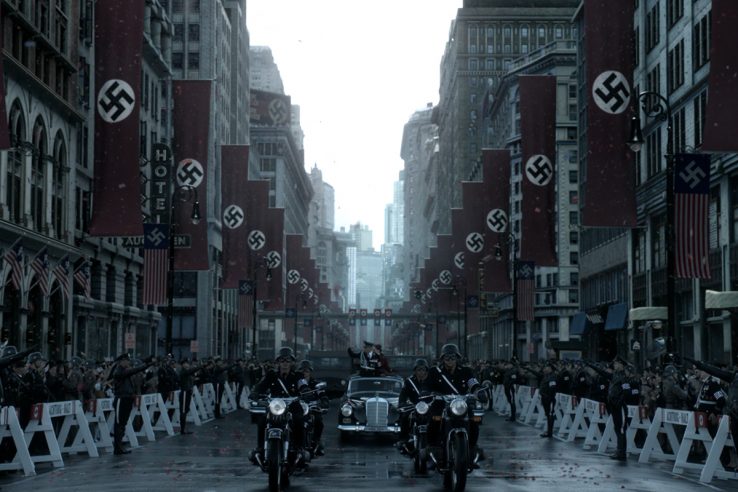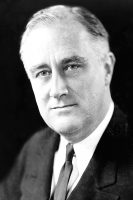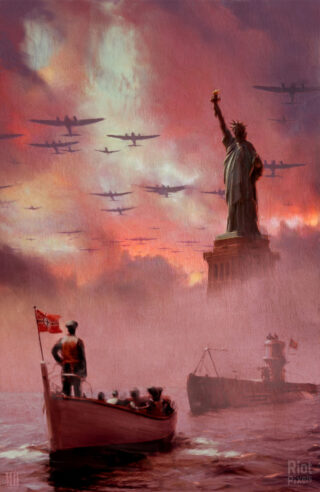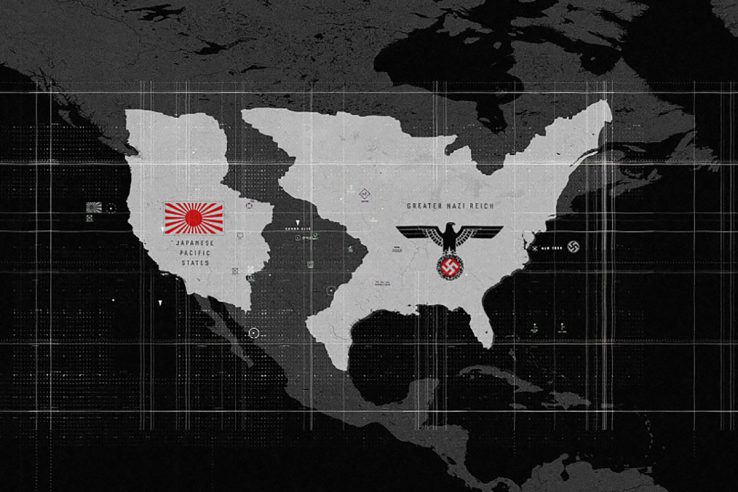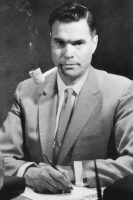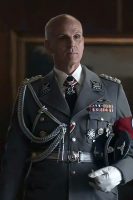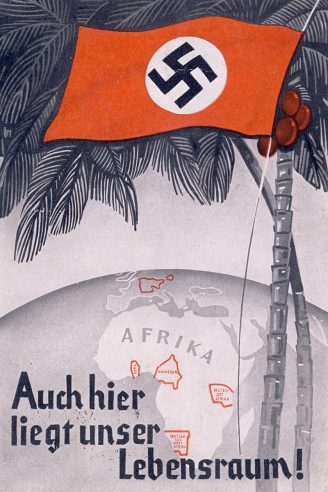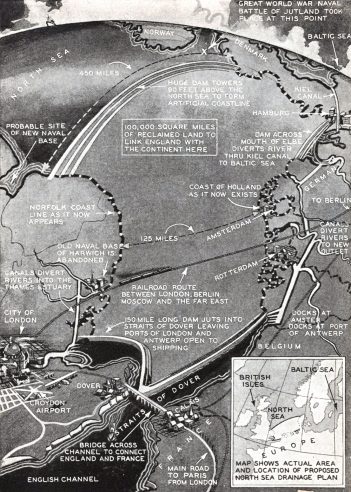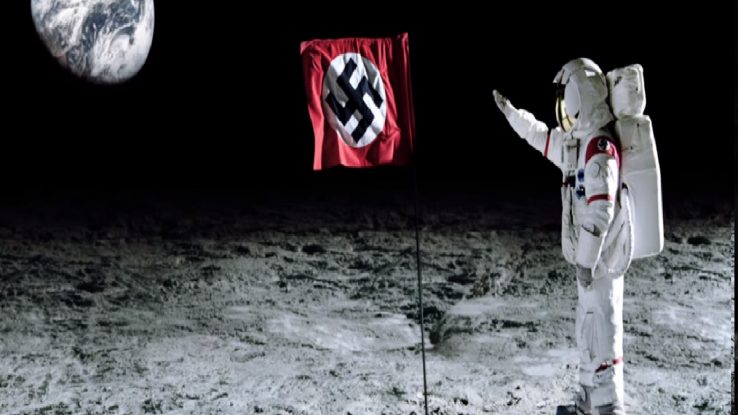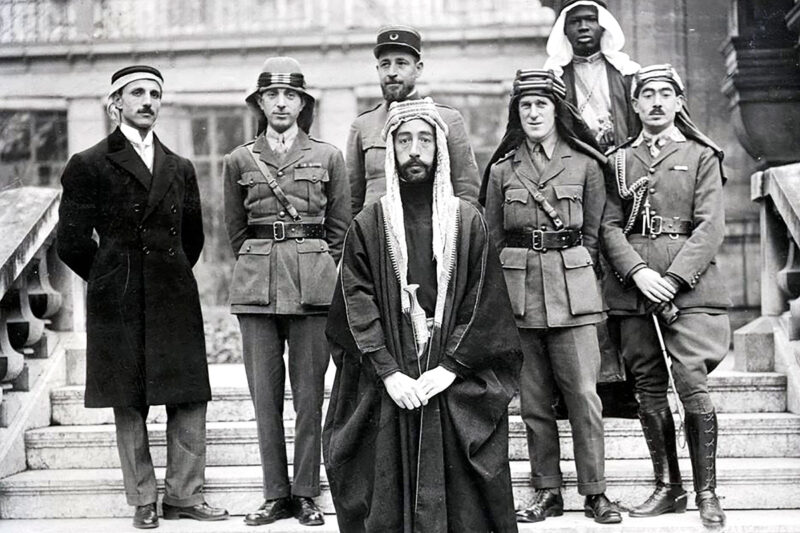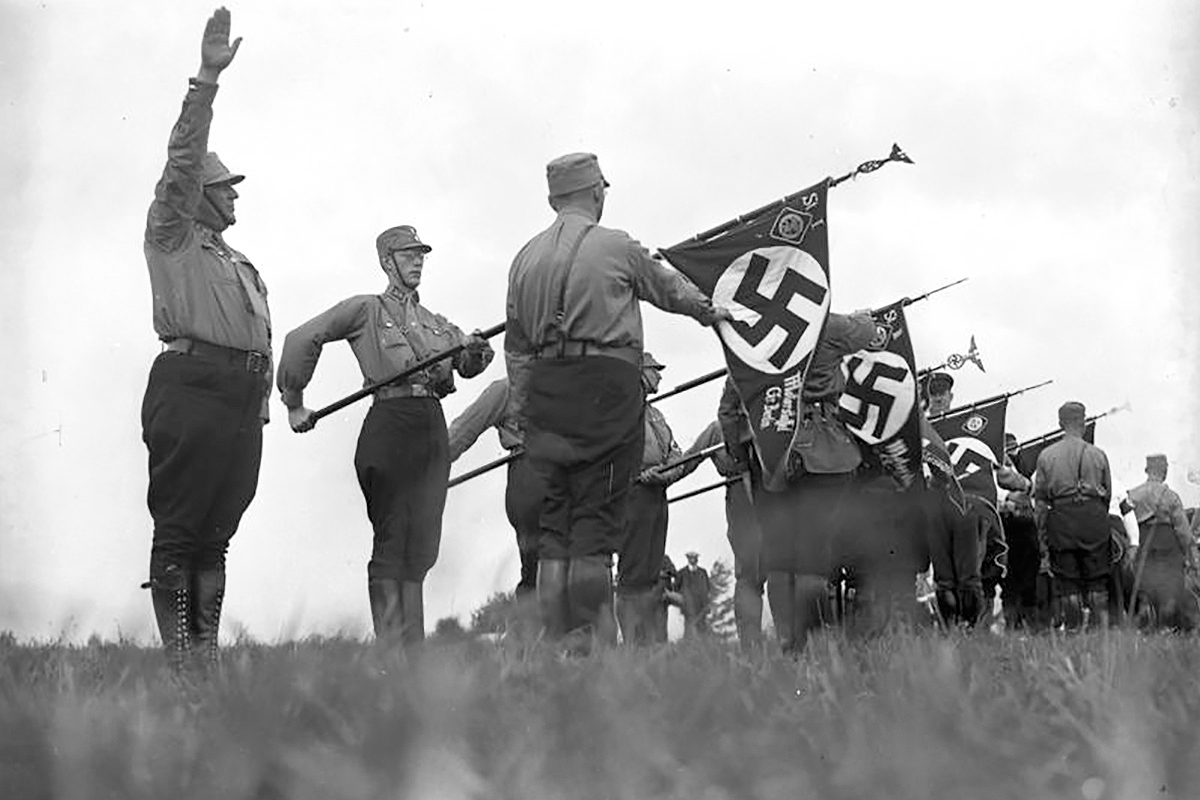We previously imagined a world in which the Axis powers signed a peace treaty with America and World War II is still being fought as a prolonged Cold War. But what if Germany and Japan had pressed ahead and invaded the United States?
This next worldbuilding installment is heavily inspired by Philip K. Dick’s The Man in the High Castle (1962) and the Amazon drama series that is based on it (2015-present, our review here). Other inspirations are William Overgard’s The Divide (1980), Harry Turtledove’s In the Presence of Mine Enemies (2003, review here) and Guy Saville’s The Afrika Reich (2011).
Roosevelt assassinated
We deviate from our timeline in 1933, when President Franklin Delano Roosevelt is assassinated by Giuseppe Zangara in Miami.
Without FDR, America remains mired in the Great Depression and stays out of World War II. Britain and the Soviet Union are unable to beat back the Nazis on their own. The former is occupied, the latter reduced to a rump state in Siberia that continues to wage a hopeless guerrilla struggle against the victorious Axis powers.
Japan has largely subdued the nationalist-communist insurgency in China and conquered India and Oceania. By the winter of 1945, the superpowers are ready to invade North America.
Axis invasion of the United States
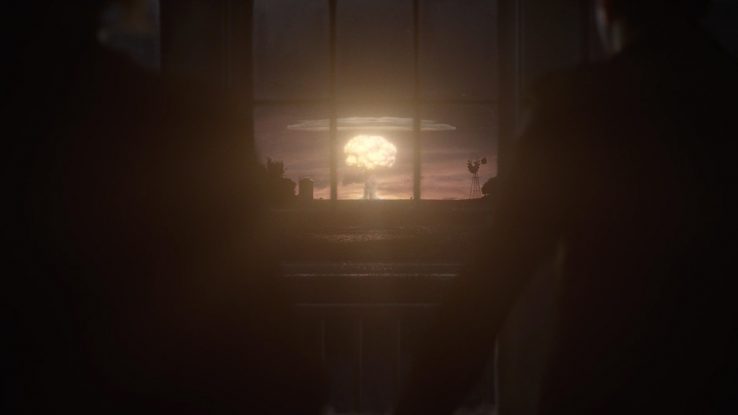
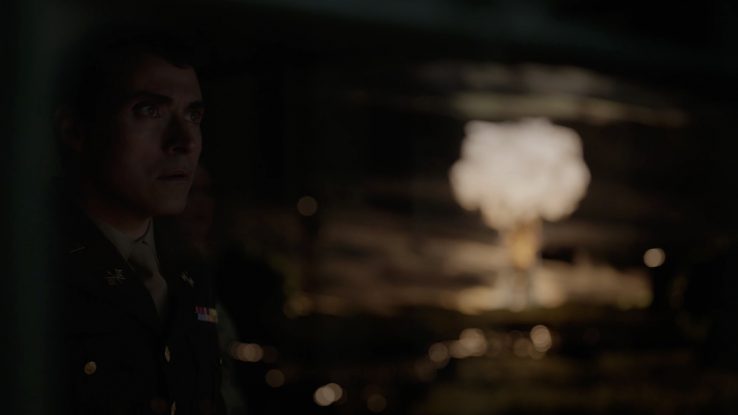
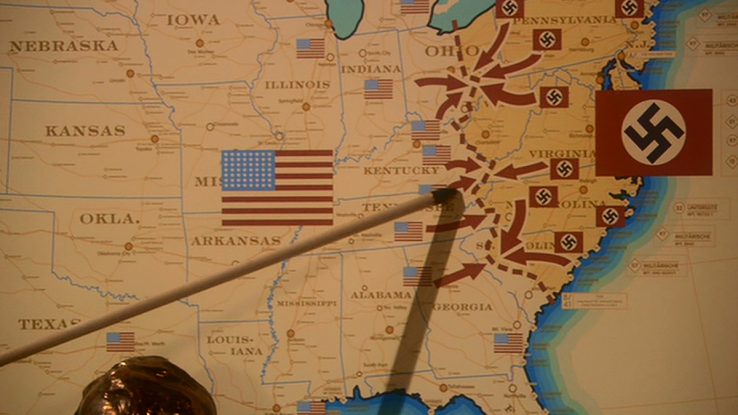
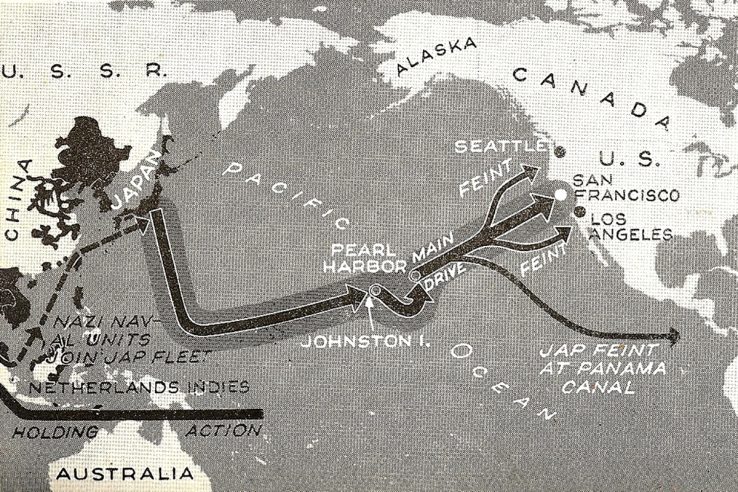
Germany paves the way for its invasion of the United States by dropping Werner Heisenberg’s atomic bomb, called the Heisenberg Device, on Washington DC in December 1945. America’s political and military leadership are wiped out. The country’s surviving elite is cowered into submission by the awesome new superweapon.
Germany seizes the Northeastern United States and gradually pushes the American Resistance into the Rocky Mountains. Japan attacks from the west, first seizing Hawaii and then launching an amphibious assault on San Francisco. Victory is declared on September 18, 1947.
Click here to learn more about the feared Axis invasion of the United States.
America is split in two
The Nazis establish a puppet state in the Eastern United States. (Amazon’s The Man in the High Castle, presumably for dramatic effect, refers to a “Greater Nazi Reich” when the Nazis established a Greater German Reich in Central and Eastern Europe and intended to rule other countries by proxy.) George Lincoln Rockwell, the founder of the American Nazi Party, is appointed Reichsmarschall of North America, but real power lies in Berlin.
Japan rules the former Western United States as the Pacific States of America, with their capital at San Francisco. The Rocky Mountains are kept independent as a neutral buffer between the two empires. Denver is the largest free American city.
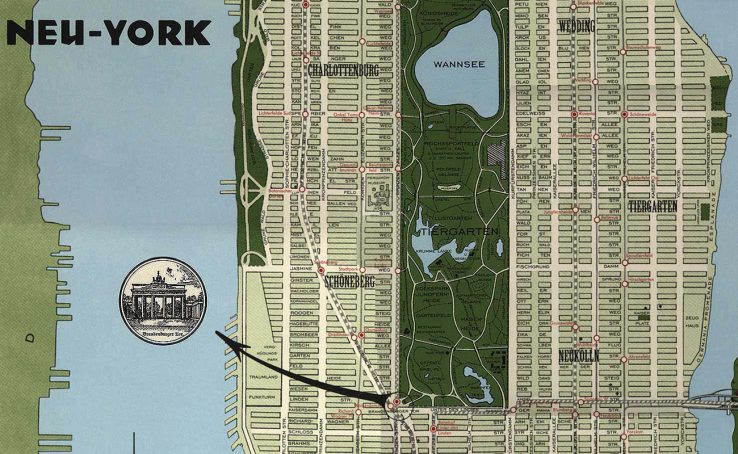
Life in the American Reich
In New York, the capital of German America, street names have been Germanized. Rockefeller Plaza is now Oceanic Plaza. The Statue of Liberty has been replaced by a Victory Monument.
The Nazis assimilate white Americans into their New Order. Blacks, Jews, homosexuals and the descendants of Eastern Europeans are either euthanized or expelled to the Neutral Zone.
Standards of living for the remaining population are relatively high. By the early 1960s, most families can afford a car and a color TV.
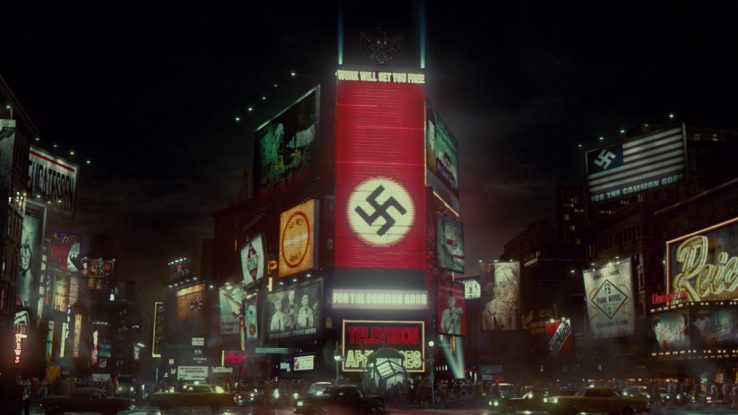
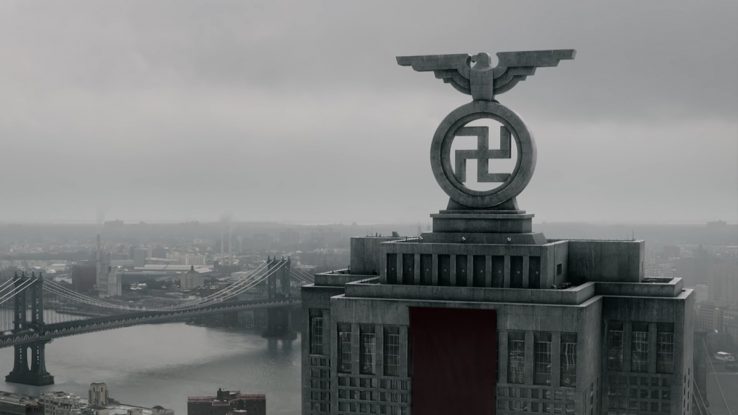

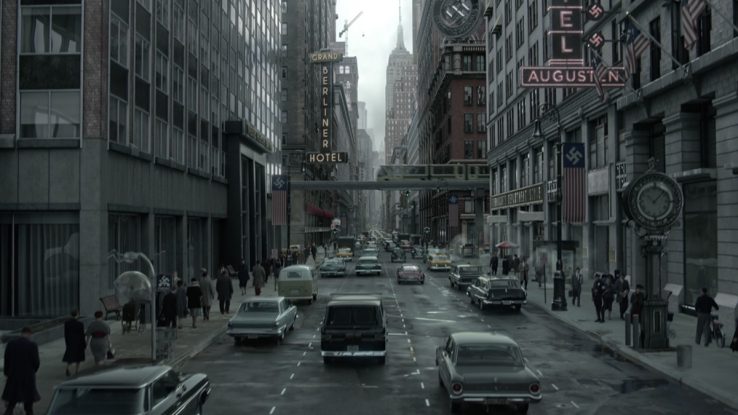
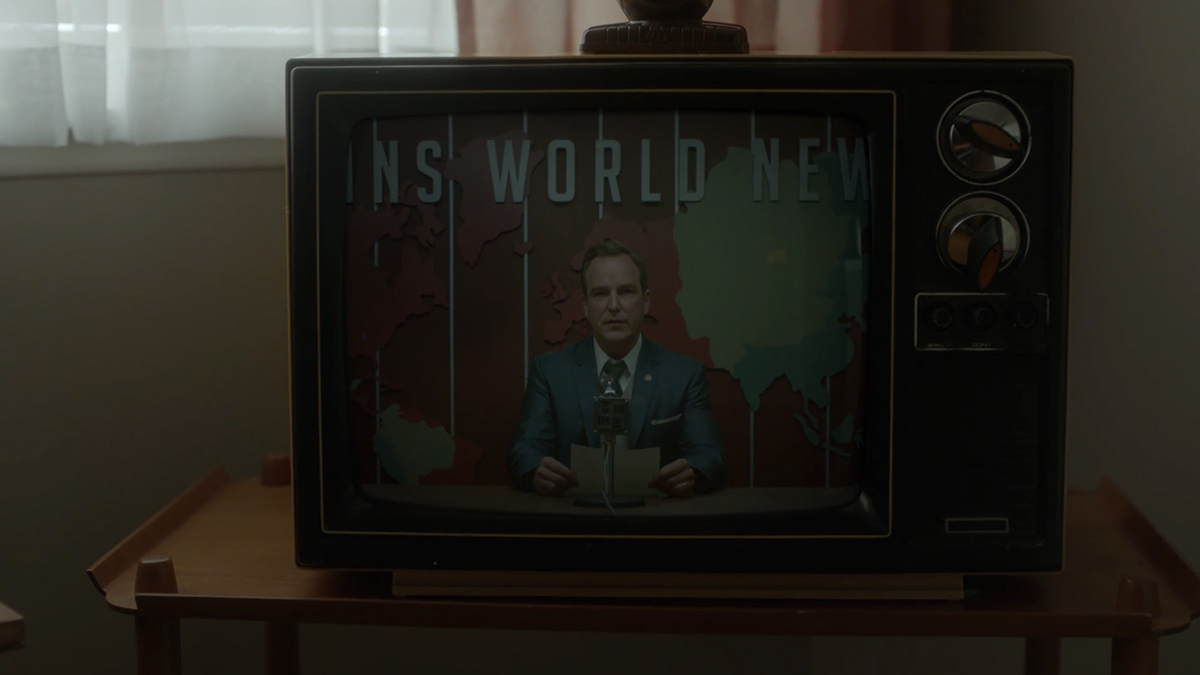
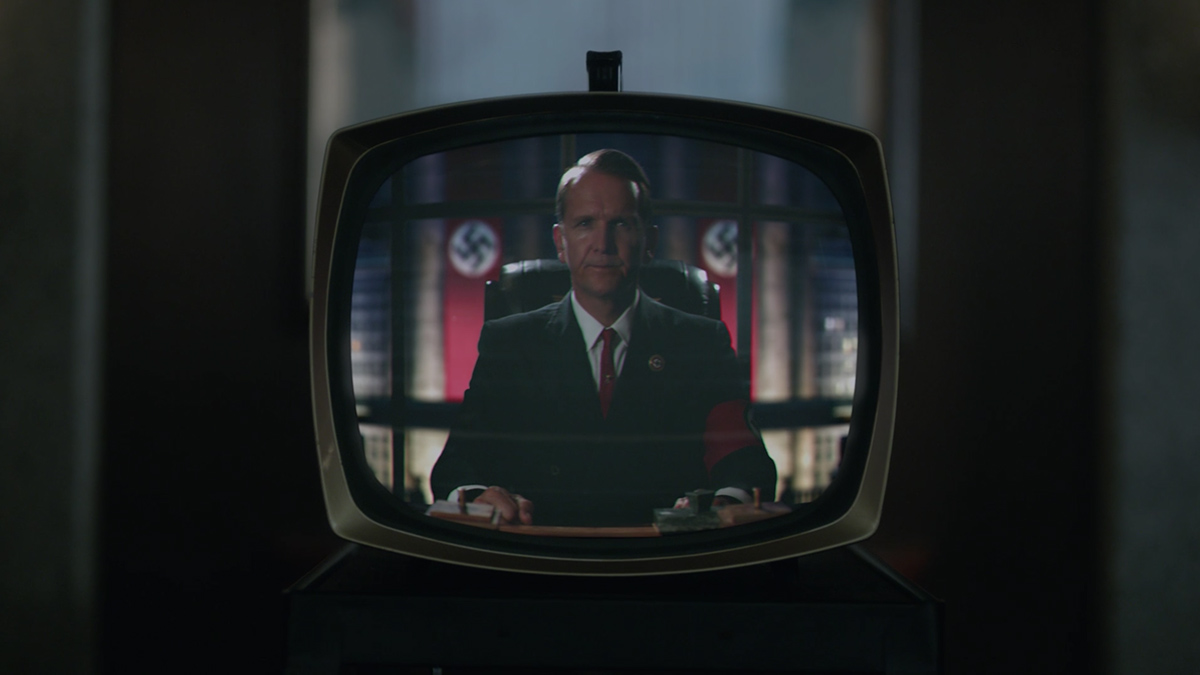
Life in the Pacific States
Japan occupies, rather than colonizes, the Pacific States. Americans and Japanese are racially segregated, however, the Empire tolerates the presence of African Americans and Jews. Americans have more economic opportunities in the Reich, but they enjoy (a little) more personal freedom under Japanese rule.
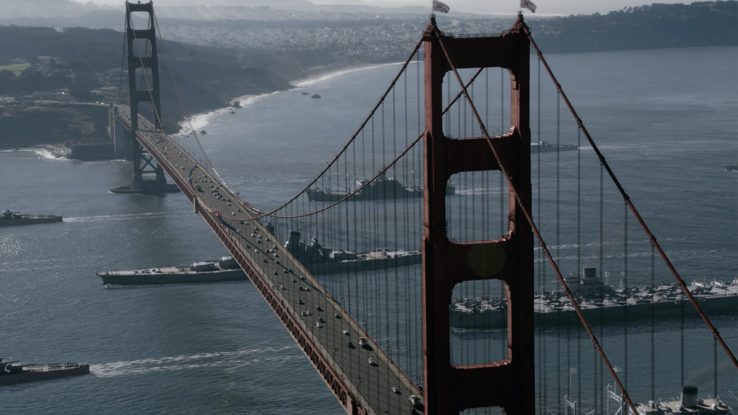
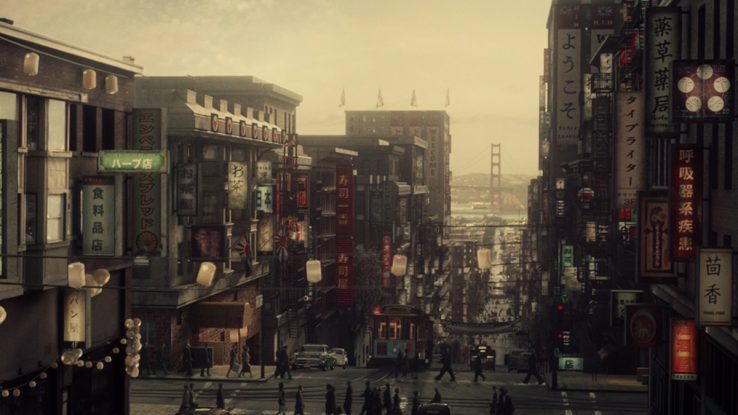
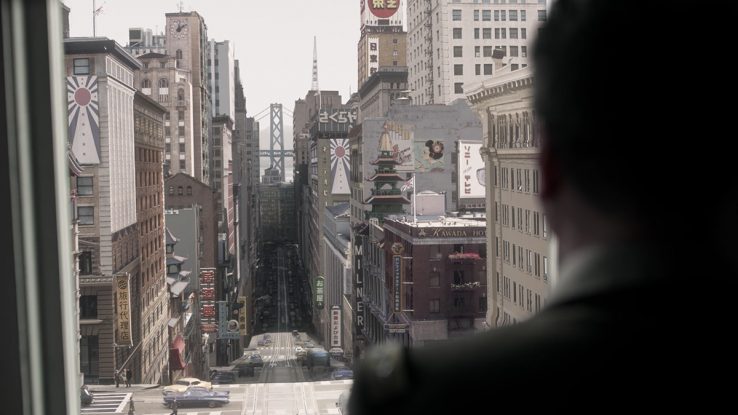
Germany colonizes the East

The Nazis reorganize Eastern Europe into four Reichskommissariaten, each largely cleansed of ethnic Slavs and made ripe for German settlement: Ostland, comprising the Baltics and the former Belarus; Ukraine, extending eastward to the River Volga; Moskowien in the northeast and Kaukasus in the south. The Crimea becomes part of the Reich itself.
Despite land being freely available to ethnic Germans, resettlement proves less popular than the regime had anticipated. With forced labor freeing Germans from hard work, only fanatics, many of them in the SS, dream of leaving the comforts of the Reich behind to become Wehrbauern in the East.
Heydrich colonizes Africa
Reinhard Heydrich, who survived an assassination attempt by Czech resistance fighters in 1942, leads the colonization of Africa.
The northeast of the continent, from Tunisia to Somaliland and including Egypt, is assigned to Italy. Angola, Mozambique, Guinea and Cape Verde remain nominally under Portuguese rule, and Morocco under Spain’s, but António de Oliveira Salazar and Francisco Franco both defer to Berlin in important decisions. Pro-Nazi Afrikaners are allowed autonomy in Rhodesia and South Africa.
Direct German rule in Mittelafrika stretches from formerly French-ruled Algeria in the north to Madagascar in the southeast. A huge Wilhelm’s Lake, named after the last German emperor, has been carved out in the former Congo.
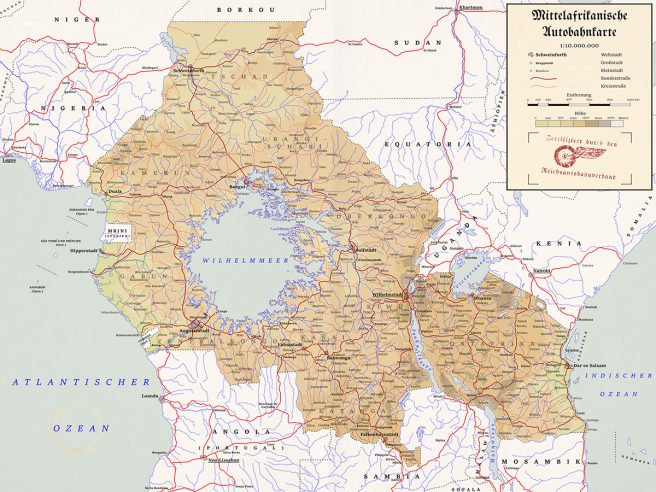
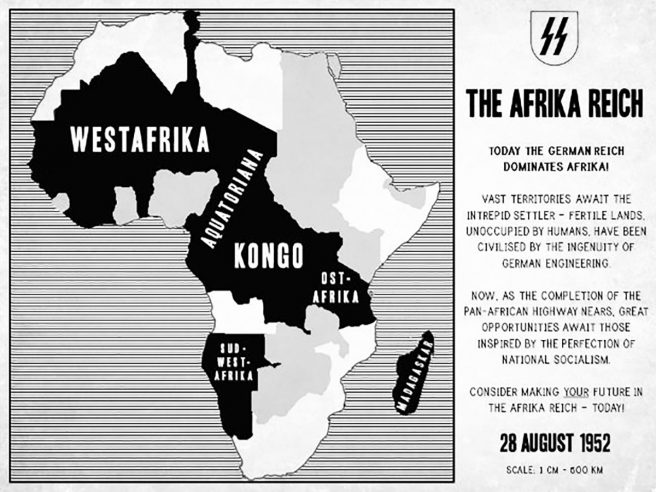
The black population south of the Sahara has been largely extermination. The Africans who survived Heydrich’s slaughter work as slaves on white-owned plantations.

Draining the Mediterranean
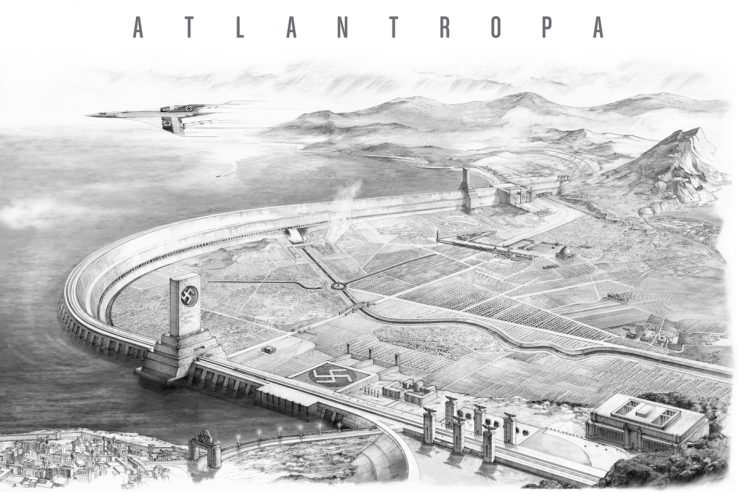
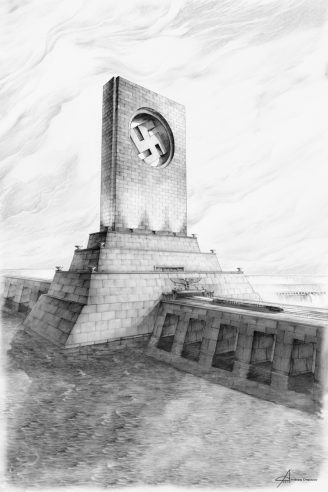
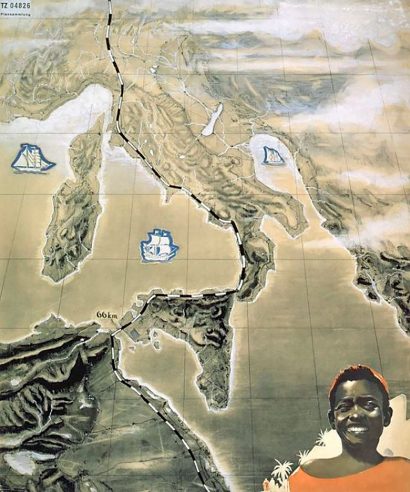
The next step in creating living space the German people do not need is draining the Mediterranean.
First proposed by Herman Sörgel in 1929, the Atlantropa project would dam off the Strait of Gibraltar and the Dardanelles. A third dam, between Sicily and Tunisia, would further lower the Mediterranean’s sea level and create vast new areas of land. The Adriatic Sea would largely disappear, which is why Italy isn’t keen on the plan.
Click here to learn more about Atlantropa.
North Sea reclamation
The next big land reclamation project is in Northwestern Europe.
The proposal is to build an enormous dyke connecting England and Denmark, creating some 260,000 square kilometers of new land for agriculture and settlement. A dam across the mouth of the Elbe would divert the river through the Kiel Canal into the Baltic Sea.
Another dam would jut into the Strait of Dover and leave the ports of Antwerp and London open to shipping. The rivers of the Netherlands would be diverted into the Channel.
A railway could be built across this new land to connect London with Berlin and Moscow.
Two worlds
The world settles into an uneasy balance of power, with Germany controlling the Atlantic and Japan controlling the Pacific world.
Although the two are allied in name, and the Japanese are considered “honorary Aryans” in the Nazi racial hierarchy, this state of affairs is unlikely to last. The Reich is technologically more advanced, has the majority of the world’s natural resources and looks down on Japan. The Japanese are afraid that Germany intends to one day rule the entire world.
Click here to learn more about the world of The Man in the High Castle.
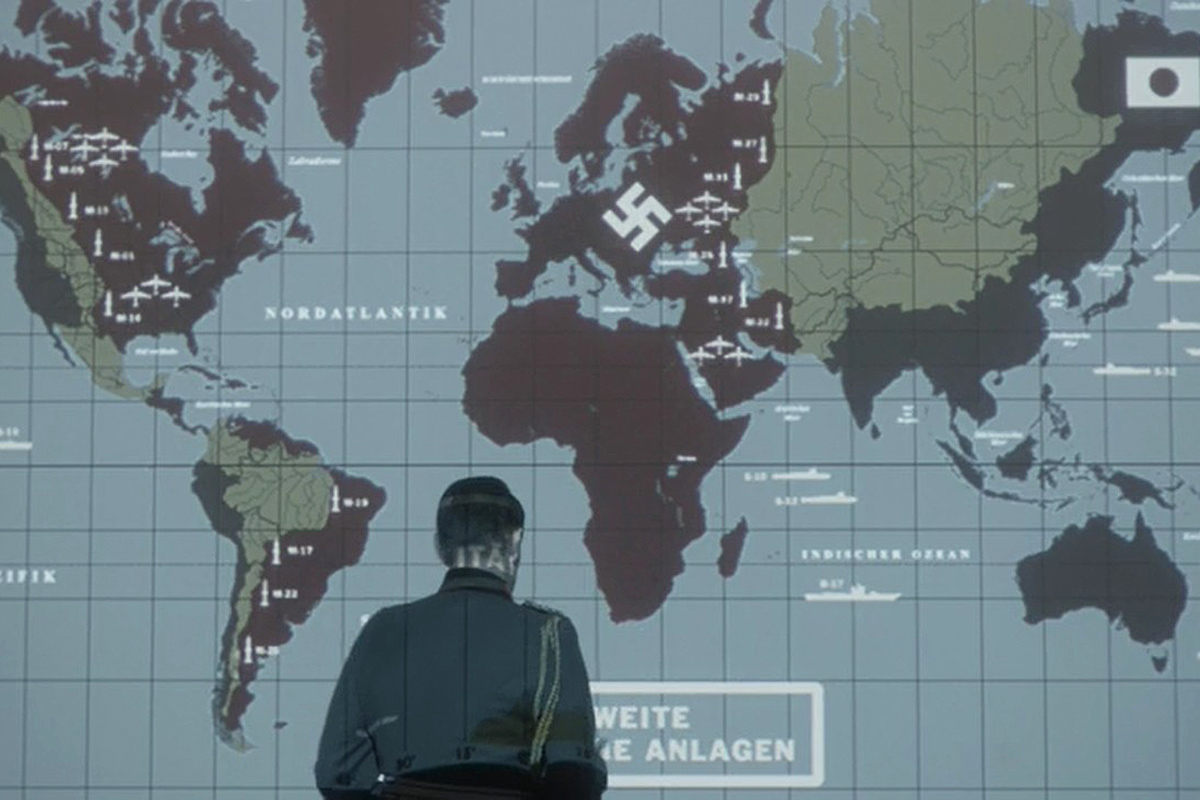
Nuclear arms race
Japan lags behind in nuclear technology, putting it at a disadvantage vis-à-vis the Reich. There are high Nazi officials who argue for a surprise attack on the Empire so long as Germany still has the upper hand. That window closes when the Japanese detonate their first atomic bomb in Monument Valley in the Pacific States.
World Capital Germania
Hitler himself has no desire for war with Japan and concentrates on his hobbies: architecture and trains.
The former involves the total reconstruction of Berlin into the world capital of Germania. Designed by Albert Speer, Hitler’s chief architect, Germania was meant to convey the greatness of the German people, but it turned into a dud for the German people living in it.
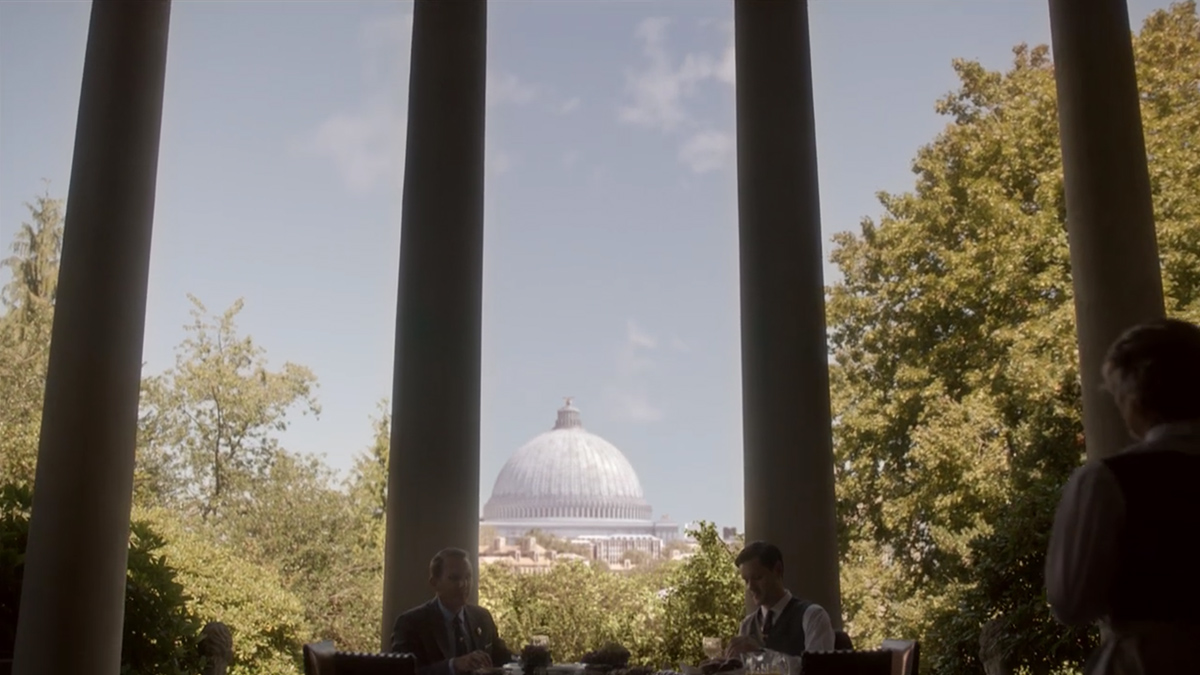
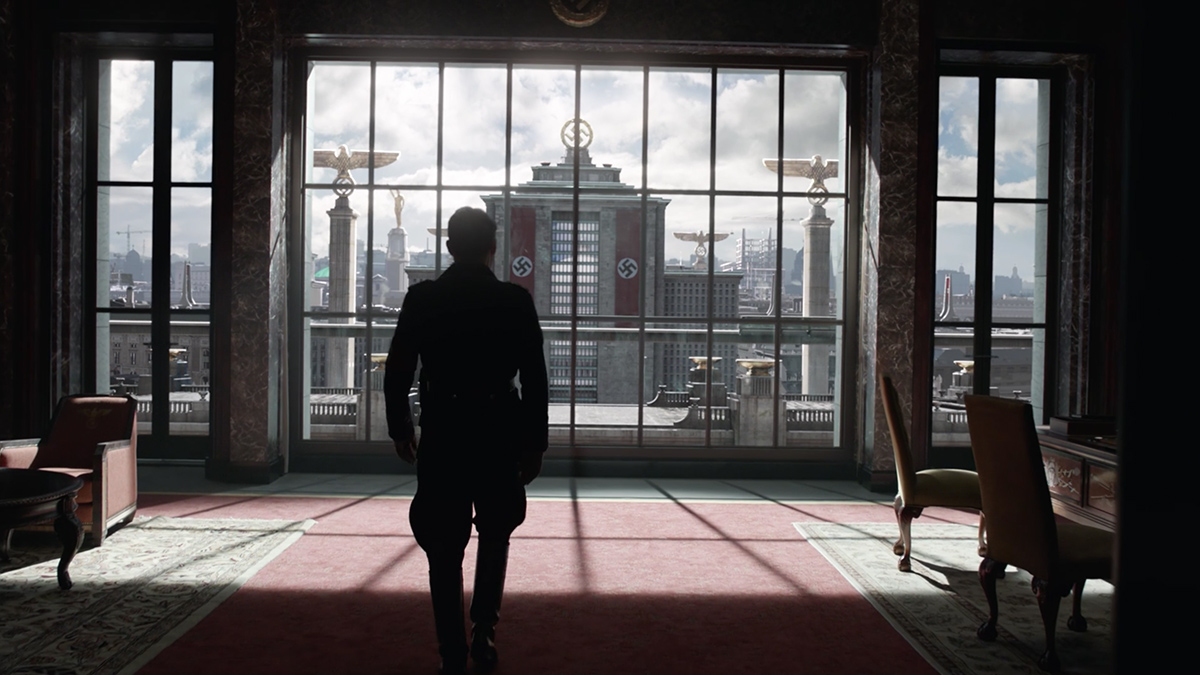
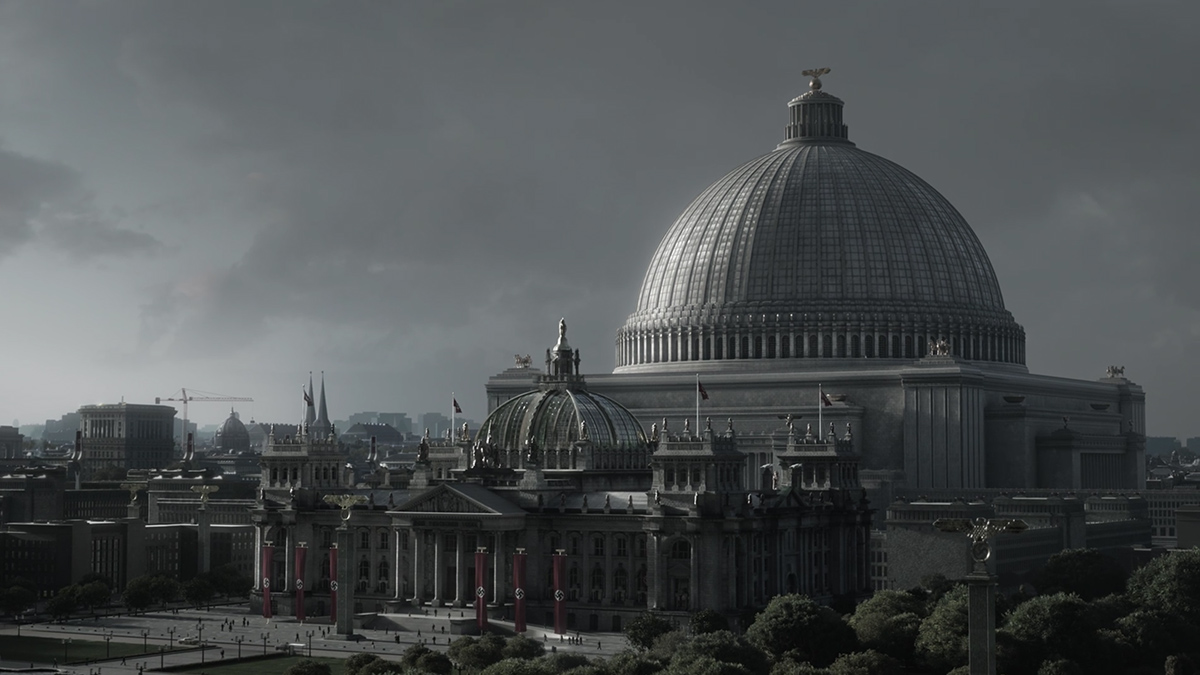
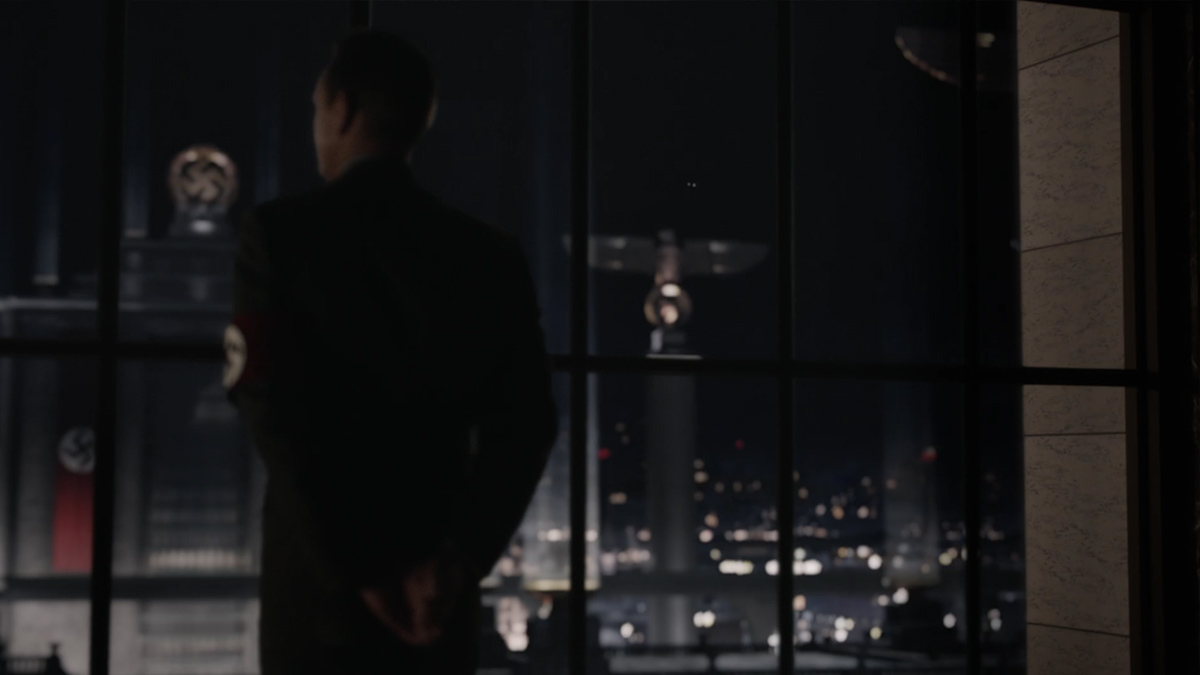
Speer did not believe in traffic lights, nor was he a big supporter of trams. Germania has excellent subways, but its denizens tire of going underground. It’s not just the metro; pedestrians are forced into tunnels every time they want to cross one of the city’s ridiculously broad streets and in the city center enormous towers block out the sun altogether.
Click here to learn more about Hitler’s nightmare capital of the world.
Volkshalle
The Volkshalle (“People’s Hall”) is the centerpiece of Speer’s Germania. Inspired by Hadrian’s Pantheon in Rome and the Panthéon in Paris, it is so large that the entire Saint Peter’s Basilica could fit inside its dome.
The Volkshalle accommodates up to 180,000 listeners and is used for state and Nazi Party ceremonies.
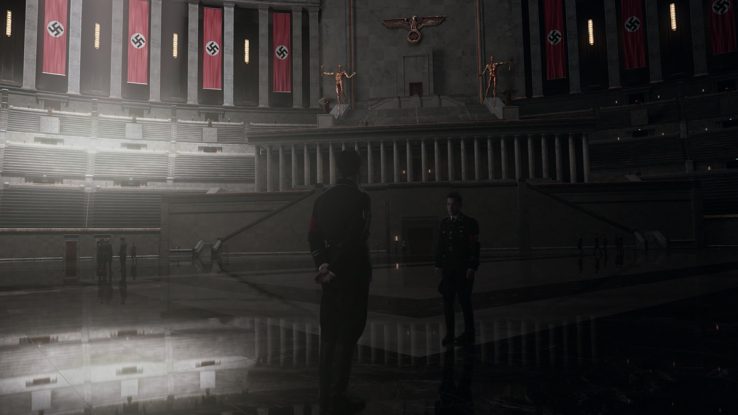
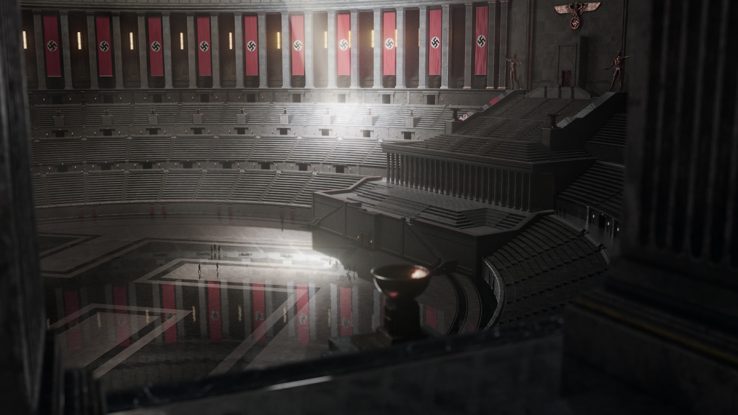

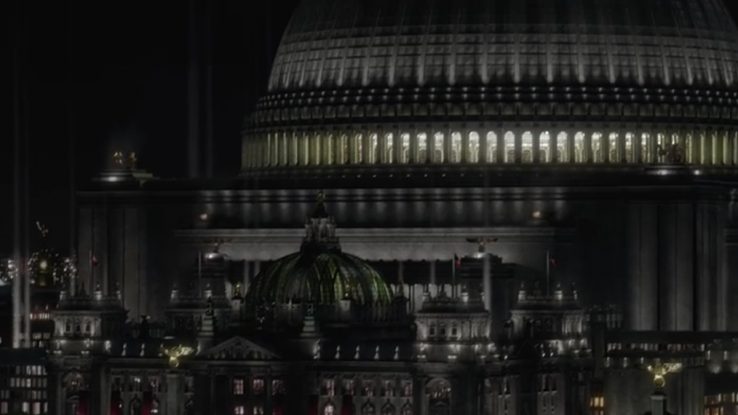
Super trains
Giant double-decker trains connect the Reich’s major cities on broad three-meter gauge tracks, called the Breitspurbahn. The trains are fast, luxurious and affordable. Only a few hours and you’re in Paris, Vienna or Lemberg for a weekend getaway. Members of the Hitler Youth get a free Breitspurbahn travel pass to see the Reich when they turn eighteen.
Click here to learn more about Hitler’s super trains.
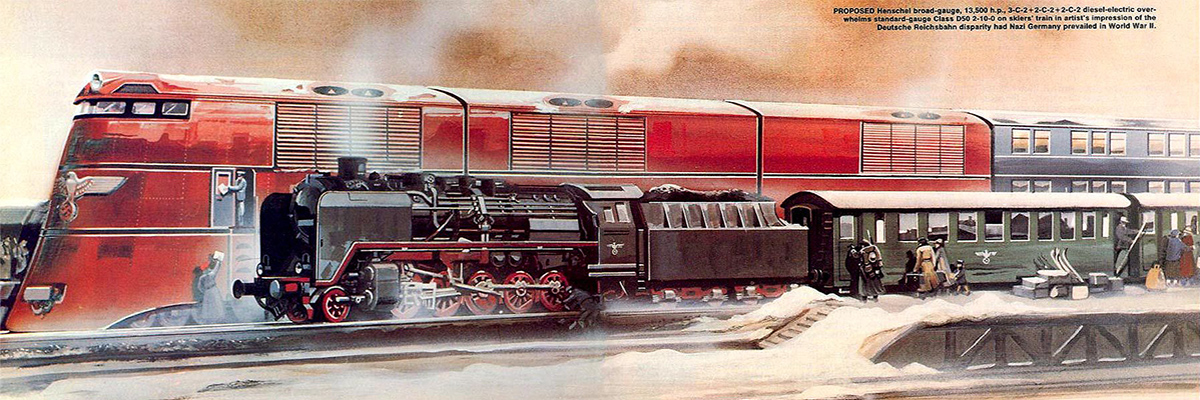
Supersonic jets
Red-and-beige supersonic jets are the pride of German engineering. They ferry civilians and officials across continents in mere hours.
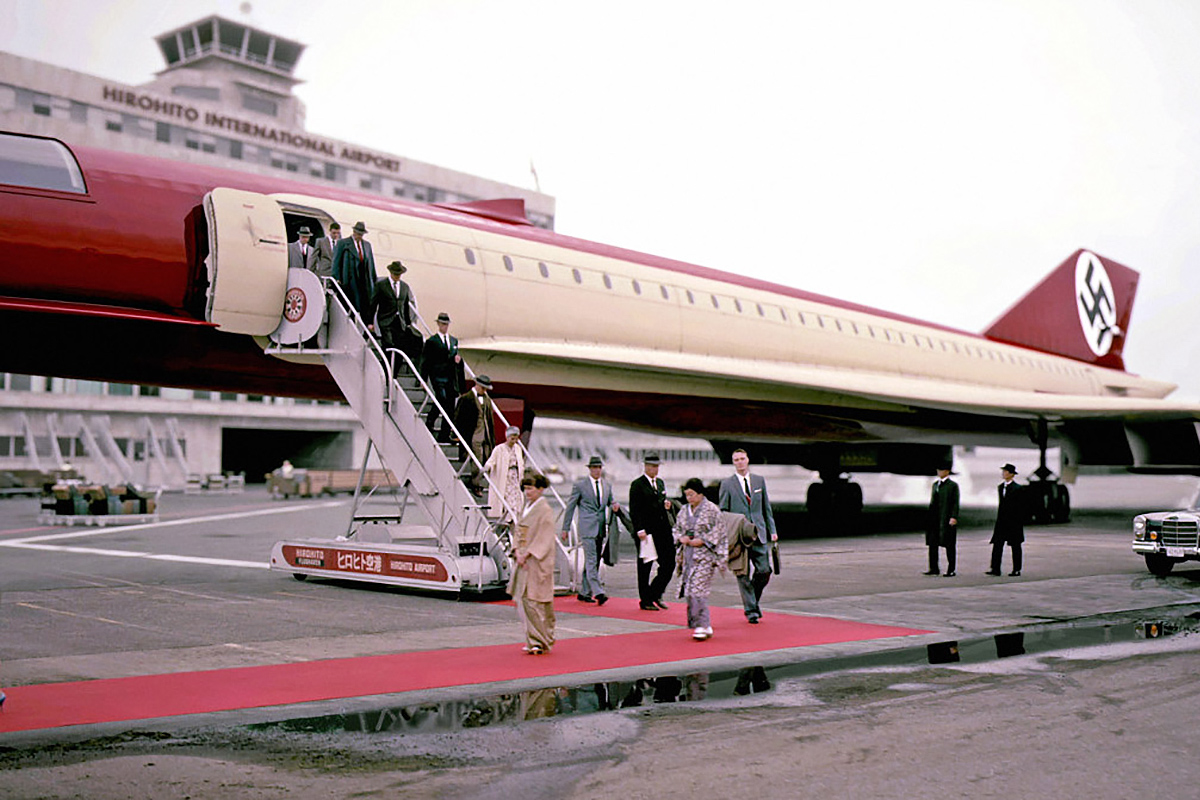
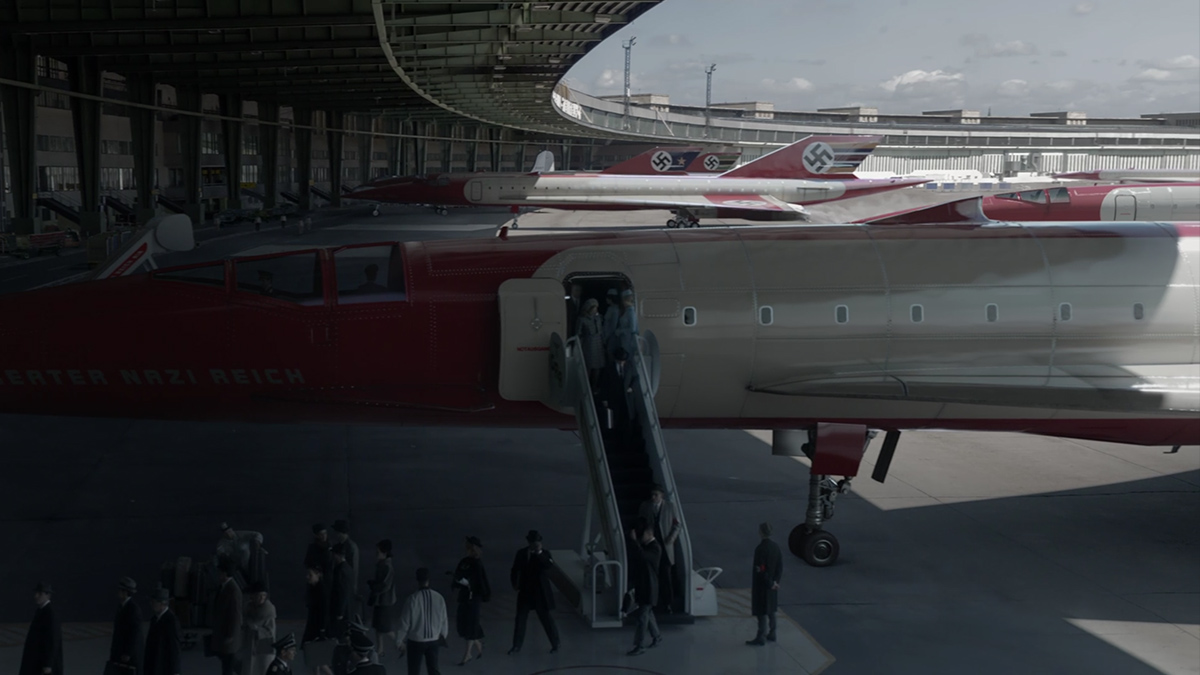
Mission to the Moon
Wernher von Braun leads a German space program at Peenemünde, which succeeds in putting a man on the Moon in 1959. The next step is building a permanent presence on the Moon.
Click here to learn more about the Nazi Moon base.
Eugenics
Eugenics and selective breeding are widespread in the Reich with the purpose of improving the Aryan master race. People with congenital defects are removed from the gene pool. Those who are deemed to possess superior genes are encouraged to have as many children as possible. The result is a society obsessed with pure blood and building the Übermensch.



